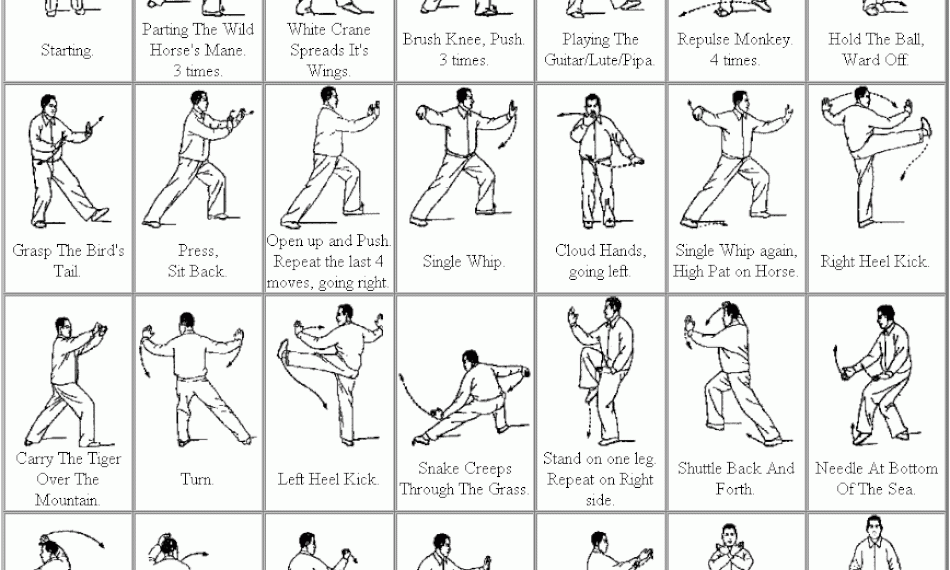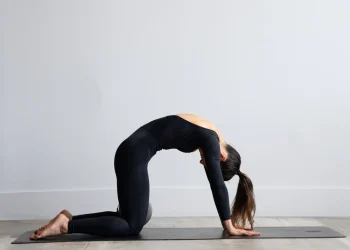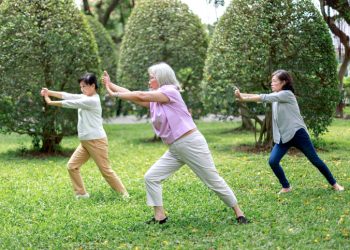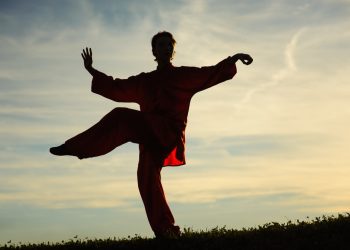Tai Chi walking, often called “meditation in motion,” represents one of the most accessible yet profound practices within the Tai Chi tradition. Unlike the flowing forms that most people associate with Tai Chi, this walking practice distills the art’s essential principles into a simple, repeatable movement that anyone can learn. Whether you’re a complete beginner to mind-body practices or an experienced practitioner looking to deepen your foundation, Tai Chi walking offers a gateway to improved balance, enhanced body awareness, and a calm, centered state of mind.
This ancient practice combines deliberate, slow-motion walking with focused breathing and mental awareness. Each step becomes an opportunity to cultivate the fundamental Tai Chi principles of rootedness, fluid weight transfer, and the integration of mind and body. The beauty of Tai Chi walking lies in its simplicity—you need no equipment, no special clothing, and only a few feet of space to begin your practice.
The Foundational Principles
Before taking your first Tai Chi step, understanding the underlying principles will transform your practice from mere slow walking into a genuine meditative art.
Rootedness and Empty/Full: In Tai Chi, we speak of “empty” and “full” legs. The full leg bears your complete weight and roots you firmly to the earth, while the empty leg is free of weight and can move without effort. This clear distinction is essential—at any given moment, you should know precisely which leg supports you and which is free to move.
Continuous Flow: Unlike normal walking where we bounce between steps, Tai Chi walking emphasizes smooth, continuous motion. Imagine moving through water or thick honey—your movements should be deliberate, controlled, and unbroken.
Upright Posture: The spine remains vertical and relaxed, as if suspended from above by a golden thread. This alignment allows energy to flow freely through your body and maintains your balance throughout the movement.
Mindful Awareness: Every moment of the practice receives your full attention. You observe the sensations in your feet, legs, and body, notice your breath, and remain present with the movement itself.
Setting Up Your Practice Space
Find a flat, clear area where you can walk forward for at least ten to fifteen steps. Initially, practicing indoors on a non-slip surface works well, though eventually, you’ll want to experience walking on various terrains. Wear comfortable, flat-soled shoes or practice barefoot to better feel your connection with the ground. Loose, comfortable clothing that doesn’t restrict your movement is ideal.
The Starting Posture
Begin by standing still and establishing your foundation. Place your feet parallel to each other, approximately hip-width apart. Distribute your weight evenly between both feet, and feel all four corners of each foot—the heel, the outer edge, the inner ball, and the outer ball—making contact with the ground.
Soften your knees slightly without locking them. Imagine your kneecaps pointing directly forward like headlights. Tuck your tailbone slightly under, eliminating any excessive arch in your lower back, while maintaining the natural curves of your spine. Let your shoulders drop away from your ears and your arms hang naturally at your sides, with your fingers gently extended.
Position your head as if balancing a book on top, with your chin slightly tucked. Relax your jaw, soften your gaze, and breathe naturally through your nose. Take three deep breaths in this standing position, feeling yourself settling into the ground like a tree establishing its roots.
The Basic Tai Chi Step: Detailed Breakdown
Phase One: Sinking and Shifting (The Preparation)
From your starting posture, begin to sink your weight into your right leg. This isn’t a quick transfer—take three to five seconds to gradually settle your full weight onto the right foot. As you sink, bend the right knee slightly more, lowering your center of gravity by perhaps an inch or two. You should feel your right foot pressing more firmly into the ground while your left foot becomes progressively lighter.
The key here is patience. Don’t rush this weight shift. Feel every degree of the transfer, noticing how your balance adjusts, how different muscles engage and release. Your upper body remains upright throughout—resist the urge to lean to the right as you shift your weight.
Phase Two: Emptying the Left Leg
Once your weight has completely transferred to the right leg, your left leg becomes “empty.” Test this by gently lifting just the toes of your left foot off the ground while keeping the heel down. If you can do this easily, your weight has fully transferred. If you feel unstable or your toes won’t lift, you need to complete the weight shift before proceeding.
This empty leg is now free to move. There should be no tension in it—it simply hangs from your hip like a puppet on a string. This emptiness is crucial; if you try to step while your leg still bears weight, you’ll create tension and lose the characteristic Tai Chi fluidity.
Phase Three: Lifting and Stepping
From this rooted right leg, begin to lift your left foot. The movement originates from your hip and core, not from straining your leg muscles. Lift the entire foot off the ground, keeping it roughly horizontal—neither pointing the toes down nor flexing them sharply upward. Raise the foot only as high as necessary to clear the ground comfortably, typically two to four inches.
Step forward with the left foot, extending from the hip. The movement should feel like your leg is floating forward rather than being thrust out. Place the heel of your left foot down first, approximately one step’s length ahead—this distance varies by individual, but aim for a comfortable stride that doesn’t require stretching or straining.
Phase Four: Completing the Step
With your left heel down, gradually roll the foot forward until the entire sole makes contact with the ground. During this rolling motion, begin to shift your weight forward onto the left foot. This weight transfer should mirror the slow, deliberate pace of Phase One—take three to five seconds to complete it.
As your weight shifts forward, your right leg naturally begins to empty. Feel your center of gravity gliding forward like a ship moving through calm water. Your torso remains upright throughout, neither leaning back nor pitching forward. The movement comes from your legs and hips, while your upper body rides along as a passenger.
Phase Five: Establishing the New Root
Continue transferring weight until your left leg becomes completely full and your right leg completely empty. Test this by attempting to lift just the toes of your right foot while keeping the heel down. You should now be in the mirror image of where you began—rooted solidly on the left leg with your right leg empty and ready to step.
Take a moment to settle into this position, ensuring your alignment is correct: spine vertical, shoulders relaxed, the left knee pointing in the same direction as the left foot.
Coordinating Breath with Movement
Once you’ve practiced the footwork several times, incorporate conscious breathing. A natural pattern is to exhale as you sink and shift your weight onto the supporting leg, then inhale as you step forward and transfer weight to the new leg. However, don’t force this pattern—let your breath and movement find their own rhythm. The breath should remain natural, deep, and unforced.
Some practitioners prefer one breath per complete step, while others take two or three breaths per step. Experiment to discover what feels most comfortable and sustainable for your practice.
Common Mistakes and Corrections
Rushing the Movement: The most frequent error is moving too quickly. Tai Chi walking should feel almost impossibly slow at first. If you complete a single step in less than ten seconds, you’re likely moving too fast to fully experience the practice’s benefits. Slow down further than feels natural.
Incomplete Weight Transfer: Many beginners shift only eighty or ninety percent of their weight, leaving the “empty” leg partially weighted. This creates tension and instability. Practice the toe-lift test frequently to ensure complete transfer.
Upper Body Movement: Your shoulders shouldn’t twist or lift, and your torso shouldn’t lean or sway as you step. If you notice these movements, slow down and focus on keeping your upper body still and aligned while your legs do all the work.
Looking Down: Keep your gaze forward and slightly downward—you should see the ground about six feet ahead without dropping your head. Looking down at your feet disrupts your alignment and balance.
Holding Your Breath: Tension often manifests as held breath. If you notice you’re not breathing, pause, take several deep breaths, and resume at a slower pace.
Progression Guidelines
Week One to Two: Practice five to ten steps forward, focusing purely on the mechanics of weight shifting and stepping. Don’t worry about perfection—simply familiarize yourself with the movement pattern. Practice for ten to fifteen minutes daily.
Week Three to Four: Increase to twenty steps and begin incorporating breath awareness. Start to notice the sensations throughout your entire body as you move, not just in your legs and feet.
Month Two: Extend your practice to thirty or more steps. Experiment with even slower movement—can you take twenty seconds to complete a single step? Begin practicing in different locations and on varied terrain.
Month Three and Beyond: Explore variations such as walking backward (which requires even greater control), adding gentle arm movements, or practicing with your eyes closed for short distances. Continue deepening your awareness of the subtle sensations within each phase of movement.
Developing Your Practice
Consistency matters more than duration. Fifteen minutes of daily practice will yield better results than an hour once a week. Consider practicing in the morning to energize your day or in the evening to release accumulated tension.
As your practice matures, Tai Chi walking becomes less about the external form and more about internal cultivation. You’ll begin to notice how this mindful movement affects your daily life—improved balance, greater body awareness, enhanced ability to remain calm under stress, and a deeper connection to the present moment.
The practice is infinitely deep. Even after years, you’ll continue discovering new layers of subtlety in something as simple as taking a step. This is the profound gift of Tai Chi walking—a practice that grows with you, continuously offering new insights into movement, awareness, and the integration of mind and body.
Begin today with patience and curiosity, and let each slow, deliberate step become a meditation, a practice, and a journey toward greater balance in all aspects of life.
- explore what is tai chi walking
- beginner’s tutorial guide
- detailed how-to tutorial
- tutorial on proper steps
- techniques covered in tutorial
- practical exercises from tutorial
- developing your practice from tutorial
- mindful movement principles in tutorial
- form instructions in tutorial
- supplementing tutorial with classes






